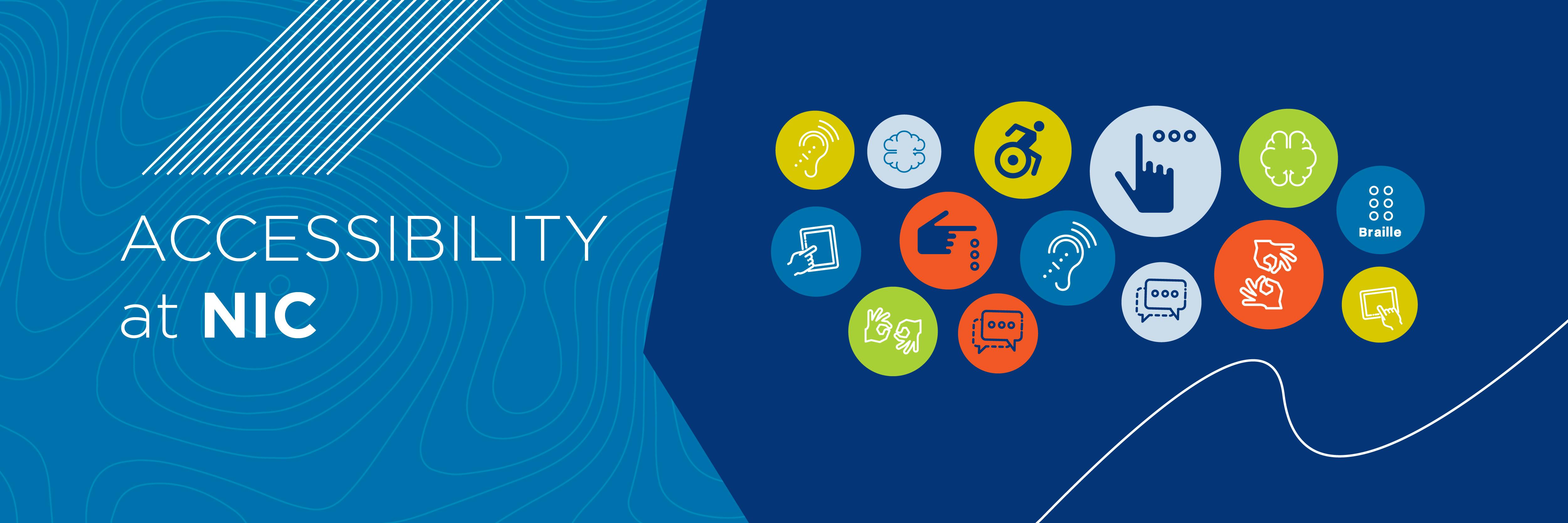Accessibility at NIC
The Accessible British Columbia Act was passed on June 17, 2021. This legislation is designed to support over 926,000 people living with some sort of disability in B.C. and ensure meaningful participation in their communities. The Accessible BC Regulation came into effect on September 1, 2022. The Regulation requires covered organizations (including BC post-secondary institutions) meet the requirements of the Accessible BC Act by September 2023. These requirements include the establishment of an accessibility committee, plan, and a tool to receive feedback on accessibility at NIC.
The Accessibility Committee and Plan
In February 2023, NIC established its first Accessibility Advisory Committee comprised of students and employees who reflect the diversity of the institution including persons with disabilities and those who directly support students and employees with disabilities.
One of the first priorities for the Accessibility Advisory Committee is to advise on the development of an Accessibility Plan. The plan will recognize the work that has already been done (or is in the works) to help make NIC more accessible, identify existing barriers, and establish an action plan to remove those barriers.
The plan is available on the NIC website.
Consultation took place from February to March 31, 2023 and included key stakeholders, students, employees and the broader community. Thank you to everyone who took the time to provide ideas, input and feedback on accessibility at NIC.
While the plan represents a point-in-time analysis of accessibility at NIC, the work of removing barriers and improving accessibility is on-going. If you have suggestions, feedback or comments, please reach out to us: accessibility@nic.bc.ca.


